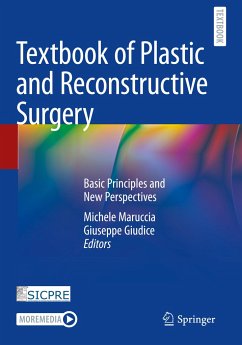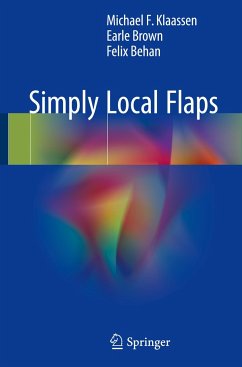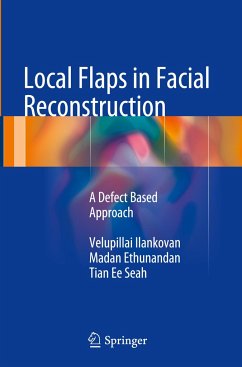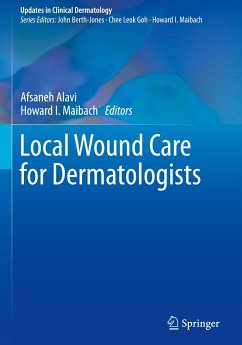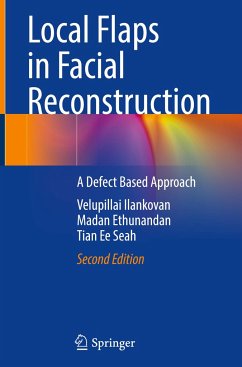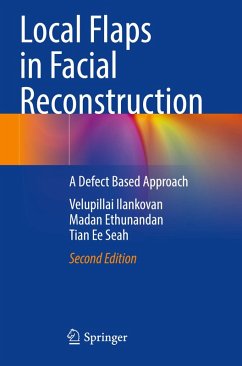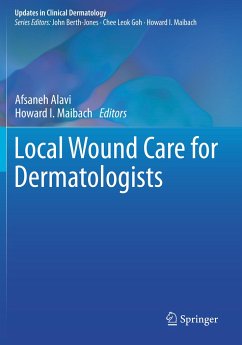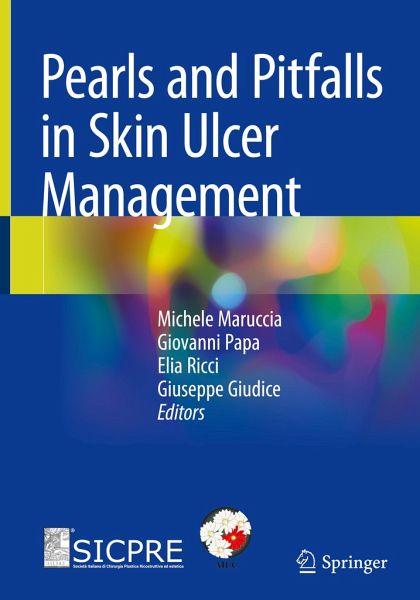
Pearls and Pitfalls in Skin Ulcer Management

PAYBACK Punkte
86 °P sammeln!
Thought as a primary reference on cutaneous ulcer management, written in a clear style by multidisciplinary experts and carefully edited and crafted, this volume covers of the complex topic of Wound Care, highlighting Pearls and Pitfalls in Skin Ulcer Management: from anatomy, epidemiology, pathogenesis and prevention, to diagnosis and selection of the best treatment options. This book also offers practical "how to do" advice and includes sections on cleaning and dressing, Negative-pressure wound therapy (NPWT), the latest on dermal substitutes, Platelet Rich Plasma (PRP) and Minimal Invasive ...
Thought as a primary reference on cutaneous ulcer management, written in a clear style by multidisciplinary experts and carefully edited and crafted, this volume covers of the complex topic of Wound Care, highlighting Pearls and Pitfalls in Skin Ulcer Management: from anatomy, epidemiology, pathogenesis and prevention, to diagnosis and selection of the best treatment options. This book also offers practical "how to do" advice and includes sections on cleaning and dressing, Negative-pressure wound therapy (NPWT), the latest on dermal substitutes, Platelet Rich Plasma (PRP) and Minimal Invasive Modality (MIMo) in burns. Specific parts illustrate how to assess a clinical wound measurement, and the role played by imaging and telemedicine. The section on infection ranges from diagnosis and classification to drug treatments, diabetic foot management and osteomyelitis. Specific chapters focus on surgical intervention, ranging from grafting and micrografting, to surgical debridement,different reconstructive options and lower limb ulcers. The final part offers additional knowledge, as for example wound and scars in aesthetic surgery, in advanced illnesses or recurrence, pain management, rehabilitation and posture restoration.
While moving from plastic surgery, this truly interdisciplinary and richly illustrated volume spans over many disciplines, and will be highly valued by all specialists that face ulcer wound care in their clinical experience, from plastic and vascular surgeons to other wound specialists and related health professionals, as physiotherapists and nurses. Written in a clear style and in an easy-to-read format, this volume will also be of use for courses and university masters teaching how to manage this complex pathology.
While moving from plastic surgery, this truly interdisciplinary and richly illustrated volume spans over many disciplines, and will be highly valued by all specialists that face ulcer wound care in their clinical experience, from plastic and vascular surgeons to other wound specialists and related health professionals, as physiotherapists and nurses. Written in a clear style and in an easy-to-read format, this volume will also be of use for courses and university masters teaching how to manage this complex pathology.




